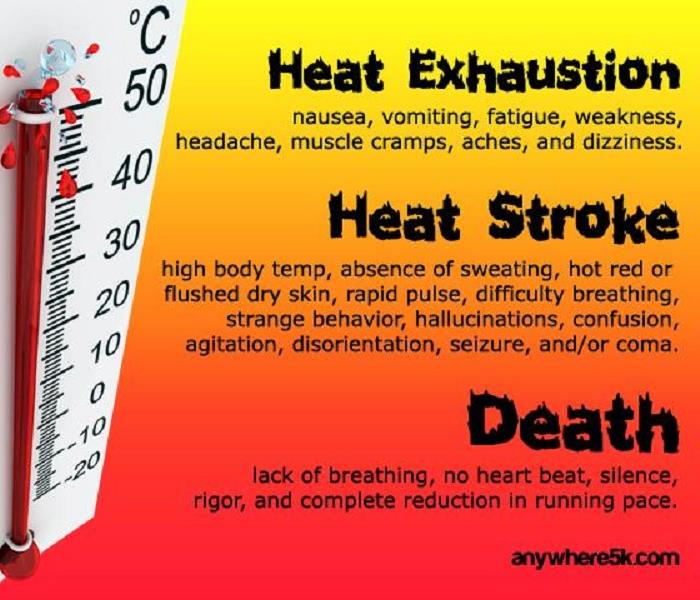Heat Stroke Vs. Heat Exhaustion
7/11/2016 (Permalink)
Do you know the difference between heat stroke and heat exhaustion in children?
Children's bodies do not adapt to hot weather as well as adult bodies. The difference between heat stroke and heat exhaustion in children is important for every parent to understand in order to prevent health problems for their child.
The school year has begun, and children are practicing various athletic activities such as football, baseball, band, color guard and cheerleading.
When practice is held outdoors, knowing the signs and symptoms of heat stroke and heat exhaustion are critical to your child's well-being.
What is the difference?
Heat exhaustion occurs when a person has not been properly hydrated. In children, ensuring proper hydration while they play or participate in athletics is vitally important.
Children produce more body heat during physical activity that adults, but they sweat much less. This reduces their ability to get rid of body heat and can quickly lead to dehydration.
Heat stroke is the most sever form of heat illness and is a life-threatening medical emergency. When a child is suffering from heat stroke, their body loses the ability to regulate its own temperature. Your child's temperature can soar to 106 degrees or higher, leading to brain damage or death if it's not treated quickly. Prompt medical treatment is required.
Heat Exhaustion:
Heavy sweating
Weakness
Cold, pale, and clammy skin
Fast, weak pulse
Nausea or vomiting
Fainting
What You Should Do:
- Move to a cooler location.
- Lie down and loosen your clothing.
- Apply cool, wet cloths to as much of your body as possible.
- Sip water.
- If you have vomited and it continues, seek medical attention immediately.
- Heat Stroke:
- High body temperature (above 103°F)
- Hot, red, dry or moist skin
- Rapid and strong pulse
- Possible unconsciousness
- What You Should Do:
- Call 911 immediately — this is a medical emergency.
- Move the person to a cooler environment.
- Reduce the person's body temperature with cool cloths or even a bath.
- Do NOT give fluids
How can you prevent heat exhaustion and heat stroke?
- Have your child drink lots of fluids before beginning outdoor activities, even if they are not thirsty.
- Dress your child in loose-fitting, light colored clothing
- Limit your child's exposure level by allowing outdoor activities only before noon and after 6pm.
- Teach your child to stop playing and come inside whenever they feel overheated.





 24/7 Emergency Service
24/7 Emergency Service